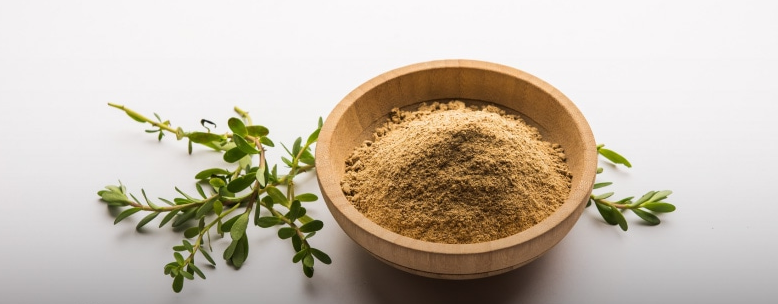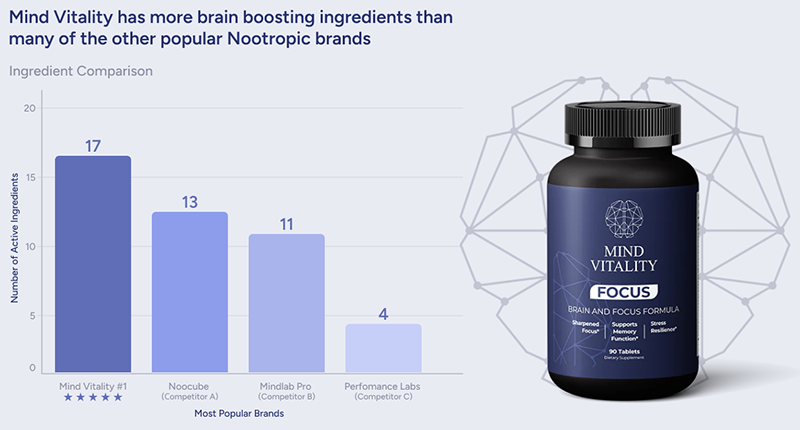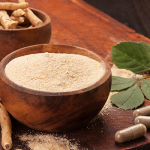Attention deficit-hyperactivity disorder, or ADHD, is a common disorder that affects many children and, to a lesser extent, adults.
In the past, ADHD was routinely treated with powerful prescription stimulants such as Ritalin and Adderall. These powerful drugs work for many patients, but for a large percentage of these people treatment is at the price of dealing with harsh side effects. More recently people have been turning to natural alternatives because they prefer a solution with less side effects. The herb brahmi has become the main natural ADHD treatment, and may be one of the best nootropics for ADHD.
Contents
What Is ADHD?
Attention deficit-hyperactivity disorder (ADHD) is a common behavioral disorder that’s characterized by impulsive and disruptive, hyperactive behavior, accompanied with an inability to pay attention.
ADHD is one of the most common mental disorders affecting children (about 8.5%), but it does also affect many adults (about 2.5%). ADHD often begins in childhood, with symptoms such as hyperactivity, short attention span, and difficulty with self-control. Associated behaviors may include disrespectful attitude, daydreaming, failure to complete homework, impulsivity, excessive fidgeting, or feeling easily hurt. Boys are far more likely to be diagnosed than girls.
ADHD is often linked to other psychiatric mood disorders, such as anxiety, that can affect work and educational performance. The medical and scientific communities haven’t identified the exact causes of ADHD, though there is strong evidence that genetics may play a role. Other possible contributing factors may include a mother who drinks alcohol or smokes excessively during pregnancy, or being born prematurely.
What Is Brahmi?
Brahmi, often referred to as bacopa from its scientific name of Bacopa monnieri, is a herb native to tropical and subtropical regions throughout the world, including parts of Australia, India, Asia, Europe, and North and South America. Brahmi is also known as water hyssop, Indian pennywort, and herb of grace.

For centuries brahmi has been an important part of Ayurveda — the ancient holistic medicine system of India. The word brahmi is English, and comes from the Sanskrit word Brahma, which is the name of the creator god and supreme intellect of the universe. Being named after such a god provides a pretty good indication of the importance Ayurvedic medicine placed on this plant.
Brahmi is considered an adaptogen. An adaptogen is one of a number of herbs or roots that increases the body’s ability to adapt to stress. The stress can be of any form — biological, physical, or chemical — and the mechanism an adaptogen uses to combat the stress can vary by plant and by the type of stress being experienced. In other words, an adaptogen adapts to a particular situation.
Health Benefits of Brahmi
While the primary focus of this article is on how brahmi is used to treat ADHD, the health benefits of brahmi are extensive, and brahmi is used for dealing with a variety of health issues.
Brahmi contributes to collagen synthesis, so you’ll find it’s an ingredient in many nutritional supplements aimed at skin care. Brahmi strengthens veins, increasing oxygenated blood levels — especially to the scalp. This is particularly important to people who have hair loss from malnourished hair follicles. Alkaloids in brahmi bind to proteins in hair shafts, producing thicker and stronger hair. As you can imagine, because of these effects some in the hair regrowth industry have touted brahmi as a cure-all for baldness. It isn’t, though it certainly can be beneficial to some people experiencing thinning hair or loss of hair.
Several of the other health concerns brahmi is used to treat include the following:
- Stress
- Anxiety
- Dementia and Alzheimer’s disease
- Memory loss
- Epilepsy
- Sexual performance issues
- Backache
- Chronic pain
- Attention deficit-hyperactivity disorder (ADHD)
It’s the last item in the above list (ADHD) that is of most importance for purposes of this article.
How Brahmi Helps Treat ADHD
Brahmi helps with ADHD because it is a powerful adaptogen — a plant that helps your body deal with stress. Brahmi reduces stress mainly by lowering the body’s production of cortisol. Cortisol is known as a stress hormone because the adrenal glands produce it in response to stressors.
A little cortisol can be a good thing — it amps up the body in situations that require a fight-or-flight response. But this type of response should only occur infrequently, and then only for a very limited time. Too much stress results in elevated levels of cortisol, resulting in negative effects on the body. Brahmi lowers cortisol levels, lessening stress. And stress plays a role in disorders such as depression, anxiety, and … ADHD.
Brahmi also helps treat ADHD by way of its nootropic properties. Nootropics — also called smart drugs or cognitive enhancers — are substances that improve cognitive functions such as memory, focus, motivation, and creativity.
The active constituents in Brahmi that give this herb its nootropic properties are called bacosides. Bacosides enhance the actions of neurotransmitters — the chemicals that send messages between neurons (brain cells) — which increases the functioning of the brain.
The combination of being an adaptogen and a nootropic works to make Brahmi very helpful for treating ADHD. The adaptogen part of brahmi brings about a sense of calm and peace, which is very helpful for the impulsive and hyperactive tendencies of someone with ADHD. The nootropic part of brahmi invigorates mental processes which helps with an ADHD sufferer’s attention difficulties. This isn’t just theory — brahmi may be the most thoroughly studied nootropic plant for the treatment of ADHD.
Brahmi vs Ritalin or Adderall for Treating ADHD
When it comes to ADHD, stimulants are the first line treatment — they’re the “go-to” medications. Physicians prescribe two stimulants in particular: Ritalin and Adderall.
Ritalin is the brand name for a stimulant called methylphenidate. Adderall is the brand name for what is actually a combination of two stimulants called amphetamine-dextroamphetamine. Both medications help to control dopamine and norepinephrine — two neurotransmitters (chemical messengers) that affect how well a person concentrates.
For many people, either Ritalin or Adderall work well for treating ADHD. But for those people, successful treatment often comes with a high cost — and we’re not referring to financial cost here. Both drugs are classified as Schedule II controlled substances, meaning there is a high risk for developing a substance use disorder. In other words, both medications can be habit-forming.
In addition to the high risk of addiction, both Ritalin and Adderall come with a host of possible side effects that need to be taken seriously. Some of these side effects include:
- Tremors
- Mood swings
- Nervousness
- Insomnia
- Skin rash
- Dizziness
- Stomach upset
- Raised blood pressure
- Loss of appetite
- Anxiety
- Irritability
- Headaches
- Fast heartbeat

The potential for addiction and the numerous potential side effects make both Ritalin and Adderall a poor choice for many people suffering from ADHD — and make brahmi a far more appealing treatment option for these same people.
Unlike prescription medications, brahmi has minimal side effects. And the few potential side effects are not severe in nature — there have been no severe side effects associated with brahmi use. Increased bowel movements, nausea, and dry mouth are the few side effects, and few people report experiencing any of them.
Parents of children with ADHD will naturally have concerns about recommended treatments. Knowing there is a possibility of their child experiencing harsh side effects from either Ritalin and Adderall can be traumatic on parents. Contrary to this, brahmi has been established to be a safe alternative to give to children with ADHD — most of the studies done on ADHD subjects have been on children.
Brahmi vs Ashwagandha for Treating ADHD
Brahmi is one of the most popular herbs associated with Ayurvedic medicine. Ashwagandha is another herb that plays a big role in Ayurveda. Both are considered adaptogens — plants that operate at the overall body system level by helping to maintain balance and combat stresses of all types. Both are also nootropics — substances that have positive effects on cognitive functions such as comprehension and memory.
So if it’s known that brahmi can help treat ADHD, it would be natural to make the assumption that ashwagandha could be a potent treatment as well. And that assumption would be correct.
Ashwagandha (botanical name Withania somnifera) is a plant native to India and Northern Africa. All parts of the plant have been used in Ayurveda, but in the Western world it is the root in particular that has gained attention. Ashwagandha has long been used to treat stress, anxiety, and depression, and more recently attention deficit-hyperactivity disorder.
So while brahmi may be a little more well known as a natural treatment for ADHD, ashwagandha is also commonly used as a treatment. Like brahmi, ashwagandha has no known serious side effects, and is safe for use by both adults and children. Both are so safe, in fact, that many people opt to take both supplements together to treat their ADHD.






